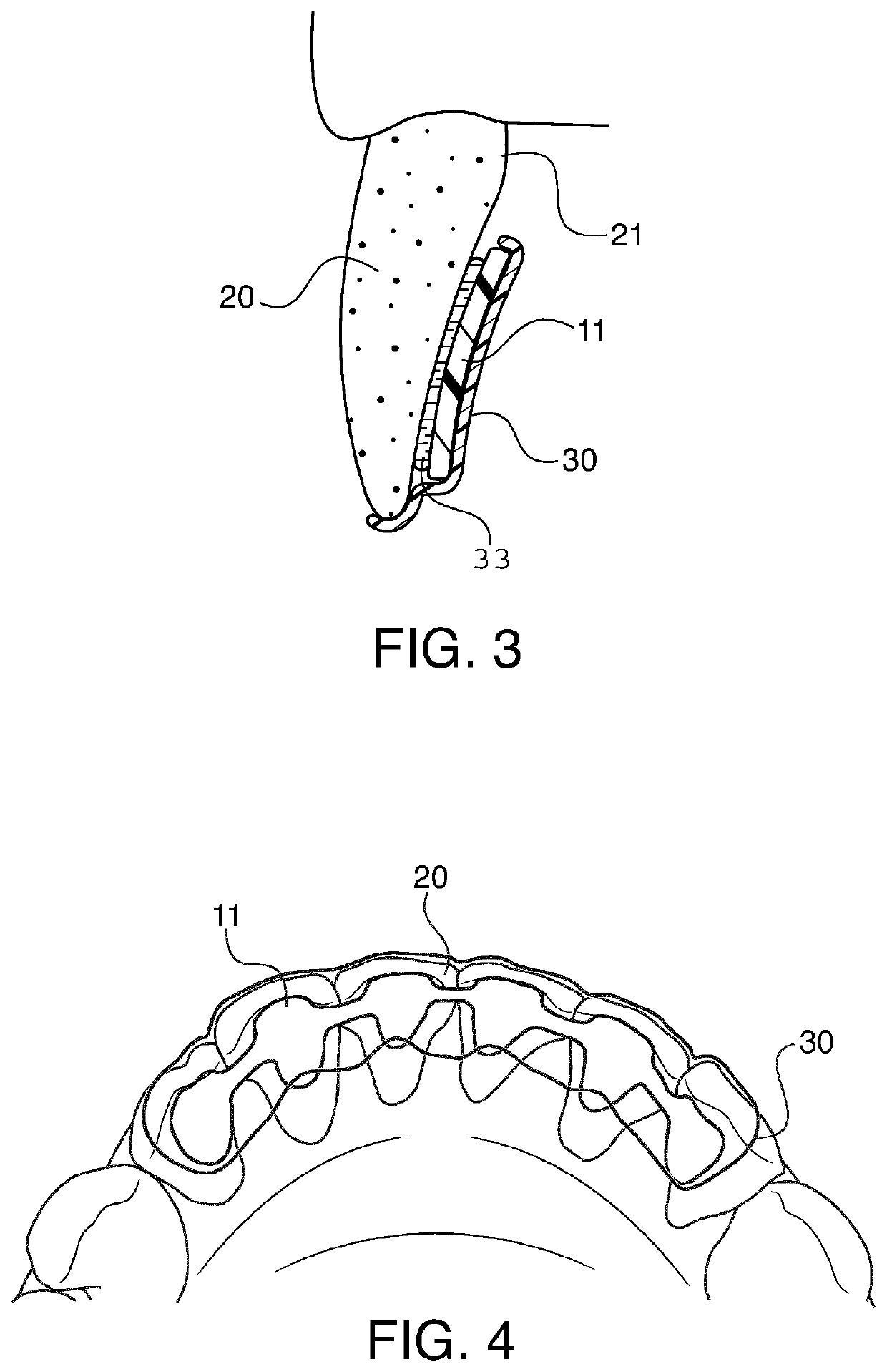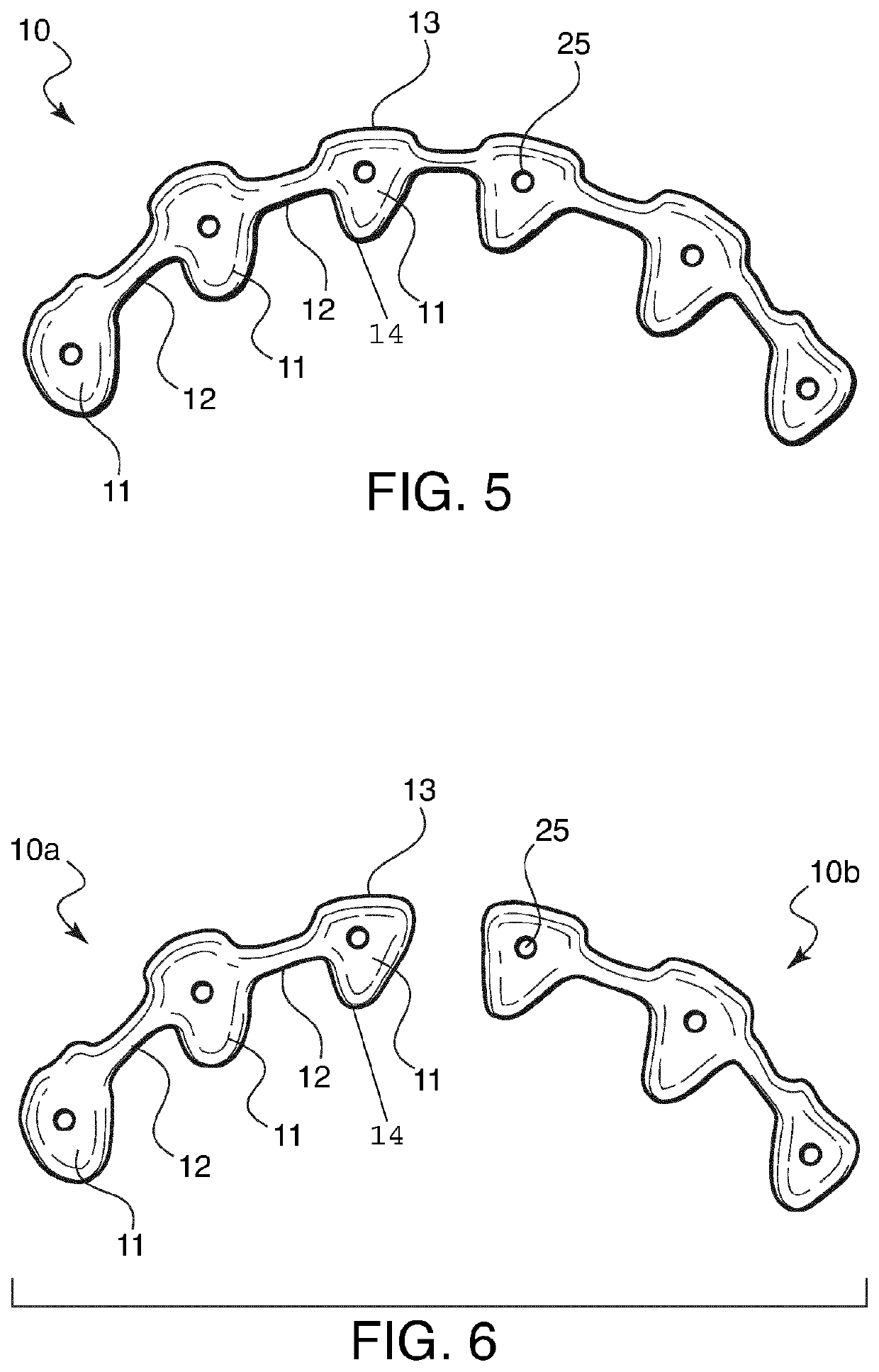Lingual retainer
a retainer and lingual technology, applied in the field of orthodontic retainers, can solve the problems of increasing the possibility of tooth decay, difficult cleaning between the teeth, and discomfort of users, and achieve the effect of straightening the patient's teeth and being simple to produ
- Summary
- Abstract
- Description
- Claims
- Application Information
AI Technical Summary
Benefits of technology
Problems solved by technology
Method used
Image
Examples
Embodiment Construction
[0021]Referring now in detail to the drawings, FIG. 1 shows a front view of the retainer 10 according to the invention. Retainer 10 comprises a plurality of tooth-adhering portions 11 connected by elongated connection portions 12. Each of the tooth-adhering portions 11 has a generally flat top edge 13 and a generally curved bottom edge 14. The connection portions 12 are located at a position below the top edge 13 of the tooth-adhering portions 11. The tooth-adhering portions 11 and connection portions 12 are formed as a single piece hydride solution, or in several pieces in a single manufacturing process.
[0022]FIG. 2 shows the retainer 10 connected to the patient's teeth 20. Retainer 10 has a rear surface that corresponds to the rear (lingual) side 21 of each of the patient's teeth 20 so that it fits securely onto the teeth. The retainer 10 can be bonded to the teeth 20 using any conventional dental bonding material.
[0023]FIG. 3 shows a side view of a tooth 20 to which tooth-adherin...
PUM
| Property | Measurement | Unit |
|---|---|---|
| thick | aaaaa | aaaaa |
| thick | aaaaa | aaaaa |
| thick | aaaaa | aaaaa |
Abstract
Description
Claims
Application Information
 Login to View More
Login to View More - R&D
- Intellectual Property
- Life Sciences
- Materials
- Tech Scout
- Unparalleled Data Quality
- Higher Quality Content
- 60% Fewer Hallucinations
Browse by: Latest US Patents, China's latest patents, Technical Efficacy Thesaurus, Application Domain, Technology Topic, Popular Technical Reports.
© 2025 PatSnap. All rights reserved.Legal|Privacy policy|Modern Slavery Act Transparency Statement|Sitemap|About US| Contact US: help@patsnap.com



